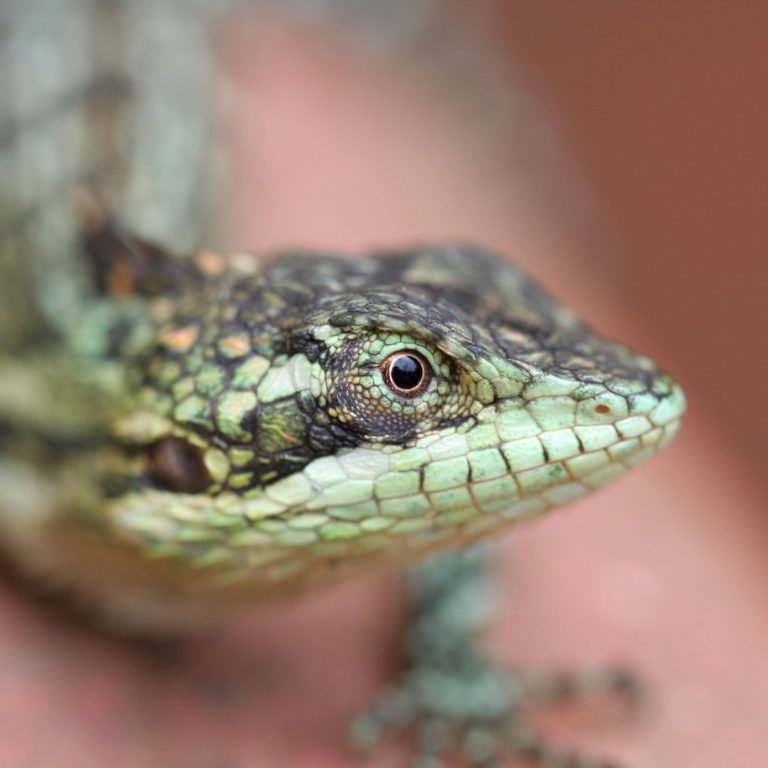Unleash the Power of Heat: Best Reptile Heating Pads for Your Pet
Understanding Reptile Heating Pads
When it comes to creating a comfortable and healthy environment for your reptile, heat plays a crucial role. Reptiles are ectothermic animals, meaning they rely on external sources of heat to regulate their body temperature. This is why reptile heating pads are an essential tool for reptile owners.
The Importance of Heat for Reptiles
Reptiles, such as snakes, lizards, and turtles, are unable to generate their own body heat like mammals do. Instead, they depend on their environment to provide the necessary warmth to carry out essential bodily functions. Maintaining an optimal temperature range is vital for reptiles to thrive, as it affects their metabolism, digestion, and overall well-being.
In their natural habitats, reptiles can bask in the warm sun or seek shelter in cooler areas to regulate their body temperature. However, in captivity, it’s crucial to provide them with a controlled heat source to simulate these conditions and ensure their physiological needs are met.
How Reptile Heating Pads Work
Reptile heating pads, also known as heat mats or heat tapes, are designed to mimic the warmth of the sun and provide a localized heat source for reptiles. These heating pads consist of a flexible, flat panel that emits heat when connected to a power source.
The heating element within the pad produces a gentle and consistent heat, which radiates upward to create a warm area within the reptile’s enclosure. This allows your reptile to easily access the heat and regulate its body temperature as needed. It’s important to note that reptile heating pads should always be used in conjunction with a reptile heat pad thermostat to ensure the temperature remains within the appropriate range.
By using reptile heating pads, you can create a thermal gradient within the enclosure, allowing your reptile to move freely between warmer and cooler areas. This enables them to thermoregulate, which is essential for their overall health and well-being.
Understanding the importance of heat for reptiles and how reptile heating pads work will help you provide a suitable environment for your scaly friend. In the next sections, we will explore different types of reptile heating pads, factors to consider when choosing one, and tips for effectively using them in your reptile’s enclosure. For more information on specific types of heating pads, such as reptile tank heating pads or reptile terrarium heating pads, check out our articles on reptile tank heat mats and reptile terrarium heating pads.
Benefits of Reptile Heating Pads
Reptile heating pads offer a range of benefits that can greatly enhance the well-being and health of your reptile companion. From maintaining optimal temperature to supporting digestion and metabolism, these heating pads are a valuable addition to your reptile’s habitat.
Maintaining Optimal Temperature
One of the primary benefits of reptile heating pads is their ability to maintain a consistent and optimal temperature within the reptile enclosure. Reptiles are ectothermic creatures, meaning they rely on external sources of heat to regulate their body temperature. By providing a heating pad, you create a warm and comfortable environment that mimics their natural habitat. This helps reptiles stay active, aids in their digestion, and promotes overall well-being.
Promoting Digestion and Metabolism
Reptiles require specific temperature ranges to effectively digest their food and maintain a healthy metabolism. Inadequate heat can lead to digestion problems and sluggishness in reptiles. Reptile heating pads play a crucial role in promoting proper digestion and metabolism by providing the necessary warmth for these processes to occur efficiently. With the right heating pad, you can ensure that your reptile is able to properly digest its food and absorb essential nutrients.
Supporting Thermoregulation
Thermoregulation is a vital aspect of a reptile’s life. Reptiles need to be able to move between different temperature zones within their enclosure to regulate their body temperature and meet their specific needs. Reptile heating pads offer a localized heat source that allows reptiles to thermoregulate effectively. By creating a temperature gradient in the enclosure, reptiles can choose the area that best suits their needs, whether they require a warmer basking spot or a cooler resting area.
To make the most of these benefits, it’s important to carefully consider factors such as the size and coverage of the heating pad, temperature control and regulation, as well as safety features. By selecting the appropriate reptile heating pad for your reptile’s specific needs, you can create a comfortable and healthy environment that promotes their overall well-being.
Remember to regularly monitor the temperature within the enclosure using a thermometer and make necessary adjustments to ensure that the temperature remains within the desired range. Regular maintenance and safety checks of the heating pad are also important to ensure its proper functioning and prevent any potential hazards.
By understanding the benefits of reptile heating pads and using them effectively, you can provide your reptile with the warmth and comfort they need to thrive in their habitat.
Types of Reptile Heating Pads
When it comes to providing the right heat for your reptile, there are different types of heating pads available. Each type offers unique features and benefits that cater to the specific needs of your pet. In this section, we will discuss three common types of reptile heating pads: under tank heating pads, heat mats, and heat tapes.
Under Tank Heating Pads
Under tank heating pads, also known as reptile tank heating pads or reptile terrarium heating pads, are designed to be placed beneath the enclosure. These heating pads provide a gentle and consistent heat source, replicating the warmth your reptile would experience in its natural habitat.
Under tank heating pads are typically made of a thin, flexible material with an adhesive side for easy installation. They adhere to the bottom of the tank or terrarium, creating a warm surface that helps maintain the optimal temperature for your reptile. These heating pads are suitable for various reptiles, including snakes, turtles, and lizards.
Heat Mats
Heat mats, also referred to as reptile heat mats or reptile tank heat mats, are another popular option for providing heat to reptiles. These mats are placed inside the enclosure, offering a localized heat source for your pet to bask on.
Heat mats are usually made of a durable material and come in various sizes to accommodate different enclosures. They are designed to generate consistent heat, allowing your reptile to regulate its body temperature effectively. Heat mats are particularly beneficial for reptiles that require specific heat gradients within their enclosure.
Heat Tapes
Heat tapes, also known as reptile heat tape, are flexible strips that provide heat when wrapped around the outside of the enclosure. These tapes offer an easy and convenient way to ensure proper heat distribution throughout the enclosure.
Heat tapes are available in different widths, allowing you to customize the coverage area to suit the size of your reptile’s enclosure. They are often used for larger enclosures or when multiple heat sources are required. Heat tapes can be applied horizontally or vertically, depending on the heating needs of your reptile.
When selecting a reptile heating pad, it’s crucial to consider the specific requirements of your pet and the type of enclosure you have. Remember to always use a reliable reptile heat pad thermostat to regulate and maintain the temperature accurately.
By understanding the various types of reptile heating pads available, you can choose the one that best suits the needs of your reptile. Ensure that the heating pad is appropriate for the species and size of your pet, and always follow the manufacturer’s instructions for installation and usage. Providing the right heat is essential for the comfort and well-being of your reptile companion.
Factors to Consider When Choosing Reptile Heating Pads
When selecting reptile heating pads for your beloved pets, there are several important factors to consider. Taking these factors into account will help ensure that you choose the right heating pad to create a comfortable and safe environment for your reptiles. The key factors to consider are size and coverage, temperature control and regulation, and safety features.
Size and Coverage
The size and coverage of the heating pad are crucial considerations when selecting one for your reptile enclosure. It’s important to choose a heating pad that matches the size of your reptile’s habitat. The pad should cover an appropriate area to provide sufficient heat distribution. Refer to our articles on reptile tank heating pads, reptile terrarium heating pads, or reptile enclosure heating pads for more specific information on choosing the right size and coverage for different types of reptile habitats.
Temperature Control and Regulation
Temperature control and regulation are essential for maintaining a safe and comfortable environment for your reptiles. Look for heating pads that offer adjustable temperature settings, allowing you to set and maintain the ideal temperature range for your specific reptile species. Some heating pads even come with built-in thermostats or temperature controllers to ensure precise temperature control. Explore our articles on reptile heat pad thermostats for more information on temperature regulation and control.
Safety Features
Ensuring the safety of your reptiles is of utmost importance when choosing a heating pad. Look for heating pads that have safety features such as overheating protection and automatic shut-off mechanisms. These features help prevent accidents and provide peace of mind. Additionally, make sure the heating pad is made from durable and fire-resistant materials to minimize the risk of any hazards. For specific information on heating pads for snakes or turtles, refer to our articles on reptile heat pad for snakes or reptile heat pad for turtles.
By considering the size and coverage, temperature control and regulation, and safety features of reptile heating pads, you can make an informed decision that will provide your reptiles with the optimal heating solution. Remember to always refer to the manufacturer’s instructions and consult with experts or veterinarians to ensure the well-being of your reptile companions.
Using Reptile Heating Pads Effectively
To ensure the well-being of your reptile, it’s important to use reptile heating pads effectively. Proper placement, monitoring of temperature, and regular maintenance are key factors in maximizing the benefits of these heating pads for your pet.
Placement and Installation
When it comes to placing the reptile heating pad, it’s essential to consider the specific needs of your reptile species. Research the ideal temperature range required for your reptile’s habitat and create a thermal gradient within the enclosure. This means providing a warm side with the heating pad and a cooler side without direct heating.
Place the heating pad on the underside of the enclosure, as reptiles primarily receive heat through their bellies. This mimics the natural warmth they would experience in their natural habitats. Ensure that the heating pad covers an appropriate area of the enclosure, providing enough heat for your reptile to regulate its body temperature effectively.
For more information on specific reptile enclosures and the best heating pad options for your pet, check out our articles on reptile tank heating pads, reptile terrarium heating pads, and reptile enclosure heating pads.
Monitoring Temperature
To ensure that the temperature remains within the desired range, it’s crucial to monitor the heat output of the heating pad regularly. Use a reliable thermometer or thermostat specifically designed for reptile habitats to accurately measure the temperature. This allows you to make any necessary adjustments to maintain the optimal thermal conditions for your reptile.
Regularly check the temperature gradient within the enclosure to ensure that your reptile has access to both warm and cooler areas. This allows them to thermoregulate by moving between these different zones as needed. Remember to place the thermometer or probe near the heating pad to monitor the specific temperature your reptile is experiencing.
Regular Maintenance and Safety Checks
Maintenance and safety checks are essential to ensure the longevity and proper functioning of your reptile heating pad. Follow the manufacturer’s instructions for cleaning and maintaining the heating pad to prevent any buildup of debris or contaminants. Regularly inspect the heating pad for any signs of wear or damage, such as frayed cords or loose connections. If you notice any issues, it’s important to replace the heating pad promptly to avoid any potential hazards.
Additionally, ensure that the heating pad is securely attached to the underside of the enclosure to prevent accidental detachment or shifting. Examine the power source and cords regularly to ensure they are in good condition and free from any damage that could pose a risk to your reptile’s safety.
By following these guidelines for the placement, monitoring, and maintenance of your reptile heating pad, you can provide a comfortable and safe environment for your reptile to thrive. Remember to always consider the specific needs of your reptile species and consult with a reptile care professional if you have any questions or concerns.







